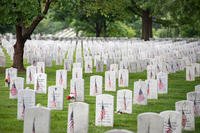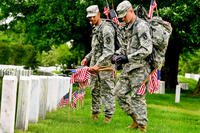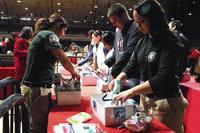American war deaths have varied dramatically, depending on the war they were volunteering (or being drafted) to fight. Some fell to the enemy, many more fell to disease. Since the Revolutionary War ended, 646,596 American troops have died in battle and more than 539,000 died from other, non-combat related causes.
Over the years, a lot of veterans have described the reasons they volunteered to serve. Many admitted that they were afraid of dying in combat. No one ever asked them if they actually considered the odds of dying -- they just went to fight anyway.
In 2018, more than 18 million Americans identified themselves as veterans, the oldest being from World War II and the Korean War. Every year, that number dwindles, making it even more imperative to remember the wars fought, to remember the Americans who died and are unable to tell their stories.
Revolutionary War Deaths
According to the American Battlefield Trust, around 230,000 proto-Americans fought in the Continental Army, though never more than 48,000 at a time. The colonial militias mustered up another 145,000. With a death toll of around 6,800, the chances of dying in combat in the Revolutionary War were roughly 1.8%.

But that's just from combat operations. Disease was a much deadlier enemy than the British troops, killing 17,000 would-be Americans. So even if you survived the battles, you still had a 4.5% chance of dying from dysentery, malaria or smallpox.
The Department of Veterans Affairs cites a much lower number of war dead: 4,435. So your chances of dying a service-connected death were much lower, according to the VA, at 1.18%.
War of 1812 Deaths
During "Mr. Madison's War," as it was derisively called in New England, the U.S. Army had 35,000 men at its peak, with another 458,000 militiamen throughout the nascent United States, not all of whom were called up to fight. Some 15,000 Americans died as a result of the War of 1812. But only around 2,260 deaths were due to the fighting. The rest were from disease.
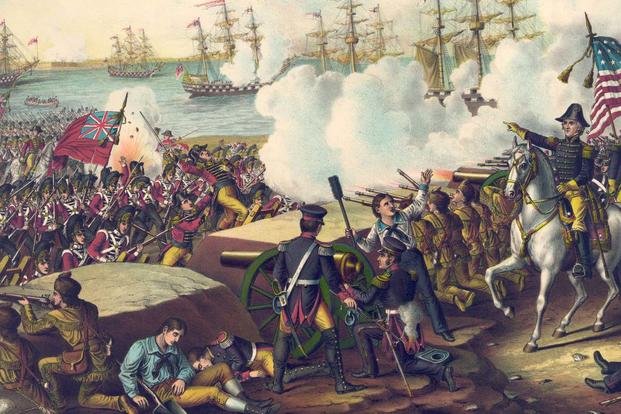
So if you were fighting the war in the Army or the militia, your chances of dying from fighting were around 0.8%. Dying from disease was much more likely, an 0.34% chance. The VA shorts the American Battlefield Trust for this war too, citing only 286,000 combatants with 2,260 service-connected deaths: a calculated fatality rate more than twice as high.
Mexican-American War Deaths
The 1846 war, which expanded the United States to include Texas, California, Arizona, New Mexico, Utah and parts of Colorado, pitted just over 78,700 U.S. troops against 82,000 Mexicans. Historians and the VA agree that 1,733 U.S. troops were killed in the war, a whopping 2.2% death rate.
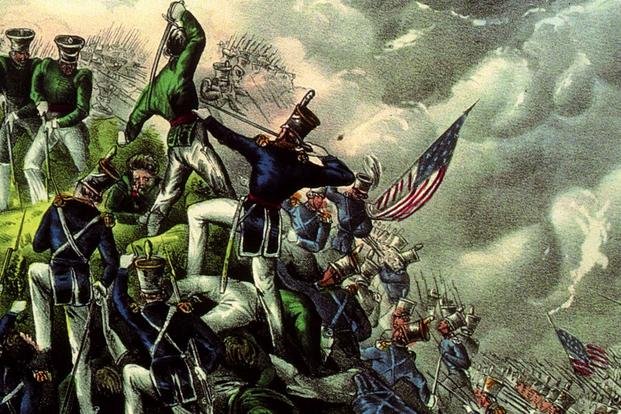
This number would be staggering if you had no idea that diseases and other non-combat mishaps killed 11,550 more, a stunning 14.67%. Before the Civil War, diseases were more effective at killing American troops than the enemy was. The total death rate in Mexico was 16.9%, which would have been memorable if not for what came in the next war.
Civil War Deaths
A rough estimate from the American Battlefield Trust puts the number of Americans killed in the Civil War at around 650,000. The VA estimates around 2.2 million Union combatants. When combined with the Confederate combatants, the number of Americans who fought the war reaches 3.26 million.
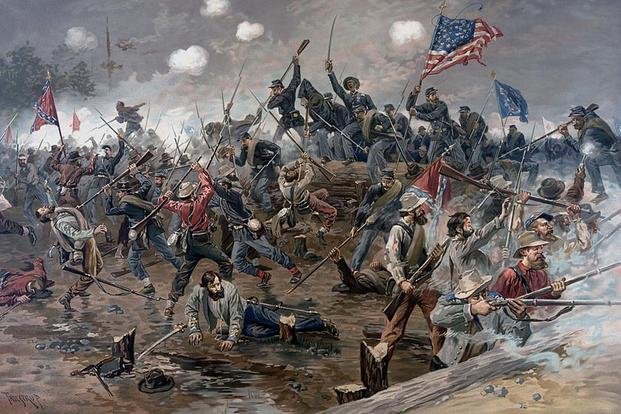
With these numbers, the overall likelihood of fighting and dying in combat was 6.6%, around the same likelihood of fighting and dying in the Union Army. The chances of dying in combat in the Confederate Army was around 7%. In all, including non-combat deaths like disease, the chances of dying as a soldier or sailor in the Civil War was 18.9% -- still the largest death rate in U.S. military history.
Indian Wars Deaths

Throughout the early history of the United States, the U.S. Army worked to support “Manifest Destiny” and westward expansion. The VA estimates some 106,000 American troops fought to "tame the West" and at least 1,000 died doing it, giving the combined wars with Native American tribes a death rate of 0.94%.
Spanish-American War Deaths
The total number of American service members who fought in the Spanish-American War hovered around 306,700, with only 385 dying in combat. Only 0.12% of those who fought in the war were killed by the Spanish.
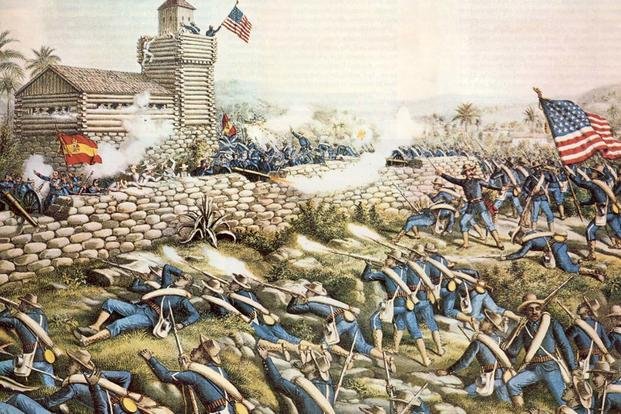
Disease did a number on American troops in this war as well. More than 2,000 fell to disease and other non-combat issues.
World War I Deaths
If the Spanish-American War showcased the U.S. military operating at high efficiency, then World War I was the beginning of the end of that. With 4.73 million men in uniform, World War I saw Americans mobilize like never before. Around 2.5% of those Doughboys would not make it home, as 53,402 fell to the enemy and another 63,114 to other causes.
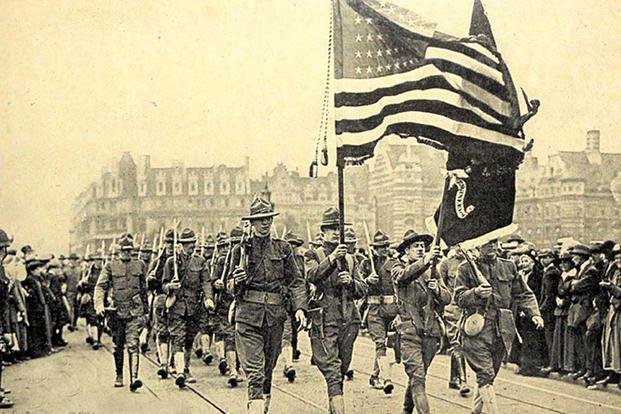
So a Great War-era soldier was almost as likely to perish due to trench foot or Spanish Flu as to a German bullet.
World War II Deaths
This war, which saw more than 16 million Americans don a uniform and completely reshaped American society, actually had a lower proportional combat death toll than the Civil War.
Only 1.8% of the 16,112,556 Americans who served in combat died at the hands of the enemy, a combat death likelihood roughly on par with World War I. According to the National World War II Museum, for every 1,000 Americans who served in the war, 8.6 were killed in action, three died from other causes, and 17.7 received non-fatal combat wounds.
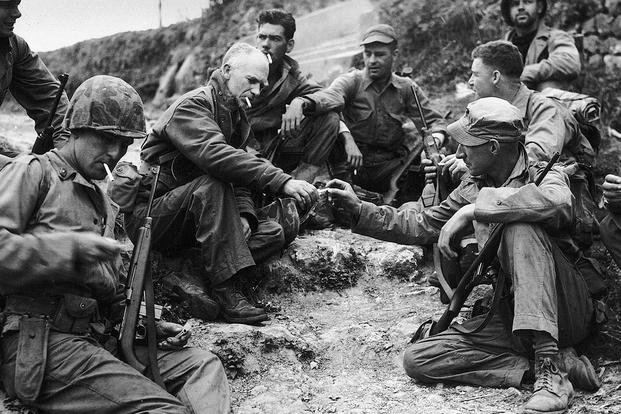
The VA estimates there are still 389,000 living World War II veterans.
Korean War Deaths
Around 2% of the 1.79 million who served in Korea would never come home. The Defense Department states that 36,574 Americans died fighting in the Korean War theater and a total of 54,246 died as a result of the war (the total has been reduced slightly over time).
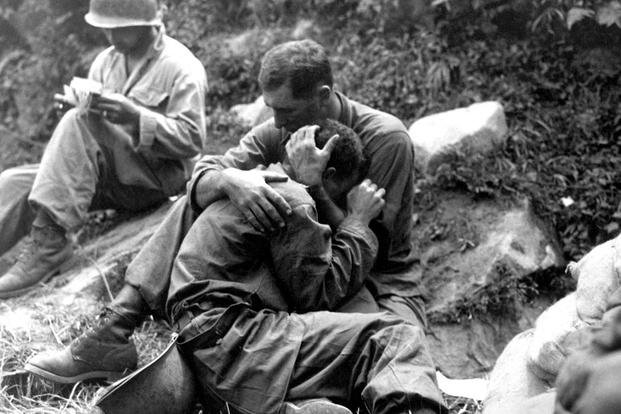
While this is the current tally, the number of Korean War-era deaths has changed slightly over the years. A 2000 CBS News report found the DoD had been slowly changing the number of combat deaths and Korean War-related deaths over the ensuing decades. At the end of the war, the tally was 54,260, which combined 33,643 combat deaths with 20,617 "other deaths."
The chances of dying skyrocketed for participants of the Korean War's famous battles. Of the 30,000 U.S. troops in the Battle of the Chosin Reservoir, for example, just under 6,000 were killed or went missing, a 19.75% loss.
As of November 2019, there are now 33,739 reported combat deaths in theater, 2,835 non-combat deaths in theater and another 17,672 non-combat deaths outside the Korean War. If the Korean War had lasted as long as the Vietnam War, the death toll would have climbed to 168,630 -- more than World War I.
The VA estimates there are 1,165,000 living Korean War veterans.
Vietnam Deaths
The number of Americans fighting in Vietnam nearly doubled, up to 3.4 million, from the number in Korea. But the number of troops killed in the war grew by only 62% -- and that was over the span of 14 years, starting from when President John F. Kennedy ramped up U.S. involvement in 1961, compared to the three years of fighting in Korea.
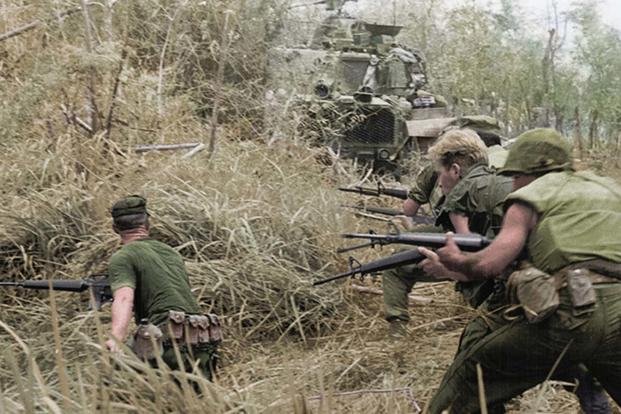
More than 58,220 American troops died during the course of the Vietnam War, for a death rate of about 1.7%. Despite the prolonged fighting, improvements in battlefield medicine and the mobility of helicopters helped save many lives.
Gulf War Deaths
The Gulf War of 1990-1991 saw a force of 694,550 American troops in service or deployed in support of the war. Of those, only 383 were killed, for a death rate of 0.1%, according to the VA in November 2019.

There are many reasons for the swift, lopsided victory and the relatively low human cost (for the winners, that is). Vast improvements in battlefield medicine, search-and-rescue operations, interoperability between branches of service and allied nations, and the Caspar Weinberger-Colin Powell doctrines of overwhelming, decisive force with the intent to win all contributed to the coalition's success in the Gulf War.
Iraq and Afghanistan Deaths
The success of American battlefield medicine and operational risk management continues through the wars in Iraq and Afghanistan. According to the most- current analysis of casualties from the wars in Iraq and Afghanistan, updated May 2020, 2.5 million American troops deployed in support of Operations Enduring Freedom, Iraqi Freedom and New Dawn. Of those, 5,364 died in action, and another 1,476 died in non-hostile incidents.
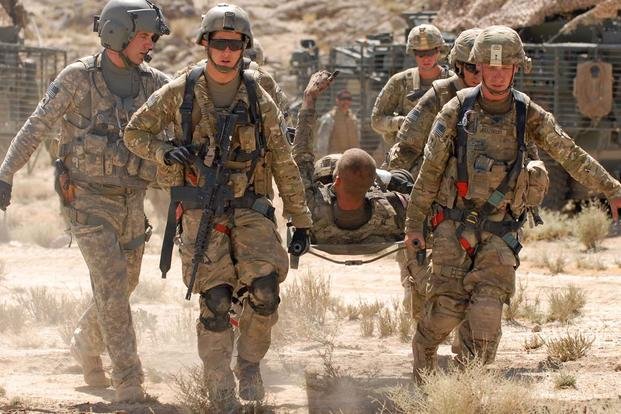
This gives the latest, ongoing wars a death rate of 0.27%, according to the VA's numbers. A more liberal estimate from iCasualties.org, sets the number slightly higher, at 8,498 combined deaths, for a rate of 0.33%. The reports from iCasualties are slightly different than those from the DoD because the website uses information from news reports instead of relying solely on government reports.
While 0.33% is still relatively small, it doesn't make the number any easier.
As of 2017, an estimated 624,000 American veterans were dying every year, most from natural causes. A study from the National Institutes of Health estimates that half of the men who die every day are veterans. As we remember America's fallen troops on Memorial Day, we might also stop by and visit those who fought past wars and listen to the memories of their fallen comrades in arms -- they may not be around come Veterans Day.
-- Blake Stilwell can be reached at blake.stilwell@military.com. He can also be found on Twitter @blakestilwell or on Facebook.
Want to Learn More About Military Life?
Whether you're thinking of joining the military, looking for post-military careers or keeping up with military life and benefits, Military.com has you covered. Subscribe to Military.com to have military news, updates and resources delivered directly to your inbox.






